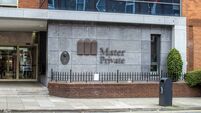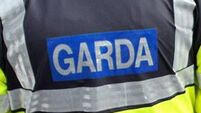Swifts’ numbers declining here and in Britain
And because swifts in Ireland nest almost exclusively in tall buildings they tend to be around people and to get noticed.
But in recent years I have noticed them less and less and I became uneasy about this. Then the other day I read a report just issued by the Royal Society for the Protection of Birds that said that in Britain the number of swifts had declined by a massive 47% since 1994. The British breeding population is now down to 50,000 pairs and they have been declared an endangered species.
Officially the Irish breeding population is 20,000 breeding pairs, but this is based on data which is nearly 20 years old and it seems likely my observations are correct and that there’s been a decline in swifts in this country as well. The Irish breeding population is probably a cohort of the British one, travelling with them from Africa.
Migratory birds don’t pay attention to national boundaries.
The RSPB report blames property developers for causing, or at least contributing to, the decline. The birds are dependent on crevices and ledges in tall buildings for nest sites and they prefer old ones and find ruins best of all. This type of habitat became rarer in Britain during the building boom and I suspect it became even rarer still in Ireland.
One of the places I used to watch swifts was the village of Robertstown near to my home in Co Kildare. It’s an old canal-side village which once had many crumbling buildings, including a Grand Canal Company store and a large Georgian canal hotel. In the past few years the store has been renovated as apartments and repairs have been made to the hotel and the swifts seem to be gone.
Swifts are a sort of sooty brown colour, apart from a small grey or white patch on the chin, with forked tails and long, curved wings. In silhouette they resemble large swallows or house martins, but they’re not remotely related to them. This is an example of convergent evolution.
All these birds are migratory and live by catching insects on the wing, so they spend a huge part of their lives in flight and have evolved a similar aerodynamic shape. But swifts have pushed this aerial life-style to an extreme – they eat, drink, sleep and even mate in flight. The only thing that forces them to land is the annual necessity to incubate eggs and rear young.
They do have very short legs and tiny feet, but these have become so atrophied by their airborne existence they they’re really only capable of gripping on to vertical surfaces, and if a swift accidentally lands on level ground it has great difficulty getting into the air again.
Their call is a loud scream pitched in two tones. The higher pitched tone comes from the females. They often form what are called ‘screaming parties’ when 10 to 15 birds fly around in circles calling to each other. This happens most commonly when they first arrive in Ireland in May and probably has something to do with pairing up and mating.
They have another unusual adaptation to cope with bad weather when flying insects are scarce. If this happens when the eggs are being incubated hatching is delayed until things improve. If it happens after hatching the young birds can drop their body temperature and go into a state similar to hibernation.
* dick.warner@examiner.ie













